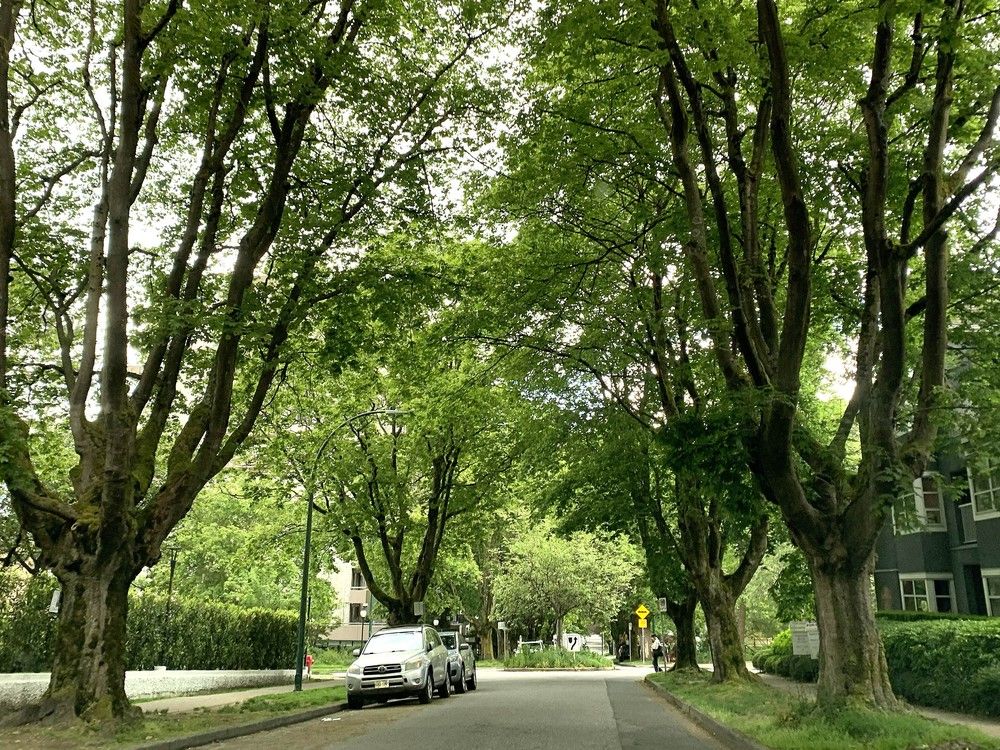
Tree canopy improvements for Vancouver could be in jeopardy under Mayor Ken Sim’s proposed $100 million budget cut.
Sim and his ABC party are calling for a zero per cent property tax increase for 2026, and last week directed city staff to find ways to slash budgets and find efficiencies, creating new worries at the Vancouver park board as to where those cuts will come from.
Park board commissioner Tom Digby said the board is concerned that trees could be a target for budget cuts.
While the city cares for trees in plazas and parking lots, the park board is responsible for the care and maintenance of over a million trees on public lands, including medians, boulevards, parks and golf courses.
There has been slow but steady progress to improve the city’s tree canopy in efforts to meet the goal of the city’s Urban Forest strategy , adopted in 2020, of bringing the urban forest canopy cover to a target of 30 per cent by 2050, said Digby, a Green party commissioner
“If we pause the work we’ve been doing, this could be a real tragedy for city trees,” said Digby. “Now it is all at risk.”
In 2022, as part of its election platform, ABC promised to expand the city’s tree canopy by adding 100,000 new trees to cool down neighbourhoods, improve equity for lower-income communities that lack adequate green spaces and mitigate climate change.
That 100,000-tree goal has not been met, but since 2022 the city’s tree canopy coverage has increased from 23 per cent to 25 per cent. According to Amit Ghanda, director of park operations, staff capacity allows the planting of just 3,000-4,000 trees on public land annually, with 50-75 per cent of those replacing trees lost that year.
Tree planting is funded through the $7.5 million allocated to urban forestry in the 2023-2026 capital plan.
Despite improvements, there is still a long way to go, said Digby.
“We are way behind.”
In a memo to mayor and council on Sept. 24, deputy city manager Armin Amrolia directed staff to explore innovative ways to reduce urban heat islands using trees and vegetation, particularly in neighbourhoods with less coverage.
The memo also highlighted the increasing cost of improving the urban forest, including climate change, development, infrastructure pressure, and costs of tree maintenance.
“We are supposed to trim trees every seven years, not every 20 years,” said Digby. “There are 5,000 stumps that need to be removed.”
In July, council approved $4 million for the park board to contract private tree maintenance companies to deal with the backlog of tree pruning and stump removal.
“We can’t plant new trees if we can’t remove the stumps,” said Digby.
Digby said the prospect of budget cuts comes at a time when the park board is finally making “decent progress” in addressing these maintenance issues.
Further complicating the issue is the recent legislation introduced by B.C. Municipal Affairs Minister Christine Boyle giving the city the power to dissolve the park board, contingent on the outcome of a referendum.
What might get lost in the shuffle is the trees, said Digby.
The park board has planted 4,200 trees in priority neighbourhoods, out of the approximately 5,000 trees to be planted in 2024 and 2025.
Priority neighbourhoods for improving equitable coverage and investment in canopy improvements include Strathcona which has nine per cent coverage, and Sunset, Hastings Sunrise, Renfrew-Collingwood, Victoria-Fraserview and Marpole, all of which have less than 20 per cent coverage.